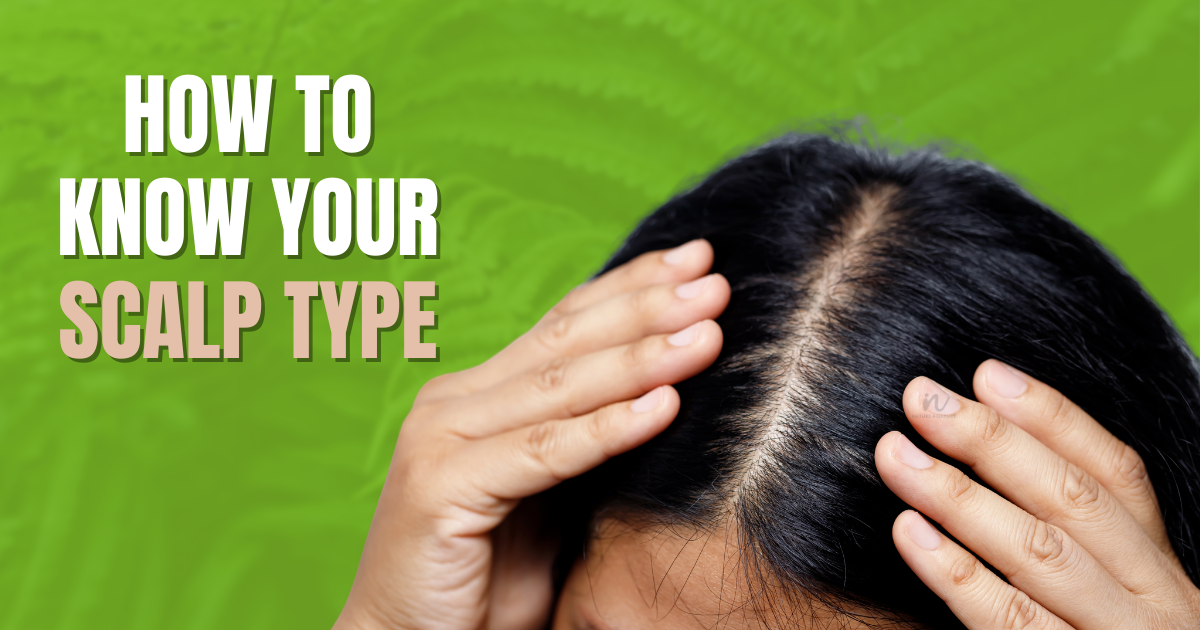Your scalp is the foundation of healthy hair—but not all scalps are the same. Just like skin, scalp types vary from person to person and can even change based on the season, diet, or hair care habits. Learning how to know your scalp type is the first step toward finding the right products and routine for stronger, healthier hair.
Let’s break down the different types of scalp, how to identify them, and the best ways to treat them naturally.
Why Scalp Type Matters
Your scalp's health is determined by two main things:
-
pH balance (ideal: 4.5 to 5.5)
-
Sebum (natural oil) production
Too much or too little of either can lead to common scalp issues like dryness, flakiness, itchiness, or excess oil. If your scalp isn’t balanced, even the best shampoo or oil won’t give the results you expect.
Types of Scalp and Their Common Issues
1. Dry Scalp
Signs:
-
Flaky, powdery dandruff
-
Itchy feeling when you scratch your scalp
-
Hair breakage or brittle ends
Cause:
Low sebum production and an imbalanced pH make it hard for the scalp to retain moisture and fight off bacteria.
Treatment:
Use moisturizing products like the Scalp Potion or Anti-Dandruff Hair Oil by N4N, which deeply hydrate and lock in moisture naturally.
2. Oily Scalp
Signs:
-
Greasy roots just a day after washing
-
Hair clumping or limpness
-
Scalp acne or clogged follicles
Cause:
Overactive sebaceous glands produce excess oil, creating a breeding ground for dandruff-causing microbes like Malassezia.
Treatment:
Choose lightweight oils that balance sebum levels. N4N’s Growth Hair Oil helps cleanse buildup and control excess oil while soothing the scalp.
3. Normal Scalp
Signs:
-
Balanced oil production
-
No flaking or itching
-
Healthy, shiny hair
Lucky you! A normal scalp needs basic maintenance — a mild shampoo, oiling once or twice a week, and protection from heat and pollution.
4. Combination Scalp
Signs:
-
Oily roots with dry, frizzy ends
Uneven scalp texture (dry patches + oily spots) -
Dull, wiry hair
Cause:
Sebum buildup at the scalp and poor oil distribution to hair lengths.
Treatment:
Use products that offer both cleansing and hydration. A mild shampoo and a balancing oil like the Scalp Potion help rebalance your scalp and nourish the dry ends.
How to Identify Your Scalp Type at Home
Try the Blot Test:
-
Shampoo your hair and let it air dry (no product).
-
After 24 hours, press a tissue against your scalp.
- No oil: Dry scalp
-
Too much oil: Oily scalp
-
Oil only at crown: Combination scalp
-
Minimal oil, no flakes: Normal scalp
Natural Care Tips for All Scalp Types
-
Wash your hair with a sulfate-free, pH-balanced shampoo
-
Avoid daily heat styling
-
Use scalp oils with natural actives like tea tree, amla, or rosemary
-
Exfoliate your scalp monthly to remove dead skin and product buildup
Shop Natural Scalp Treatments at N4N
-
Anti-Dandruff Hair Oil – perfect for dry or itchy scalps
-
Growth Potion Hair Oil – balances oil and boosts growth
-
100% natural, chemical-free, and suitable for all scalp types
Conclusion
Knowing your scalp type is key to solving common issues like dandruff, dryness, and excessive oiliness. With the right knowledge and the right products, you can transform your scalp health and hair quality.
Still not sure? Try our products based on your symptoms and observe the difference in just a few weeks!



